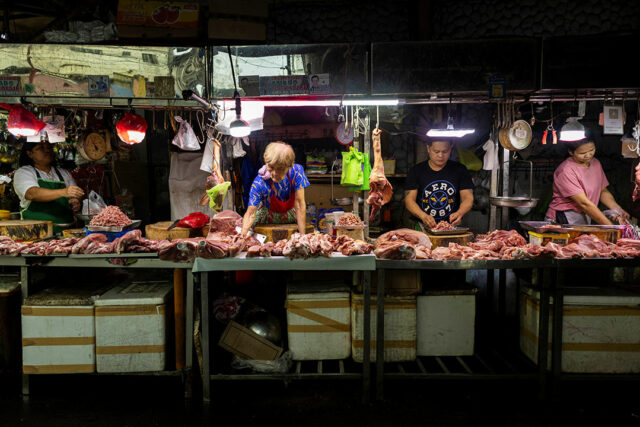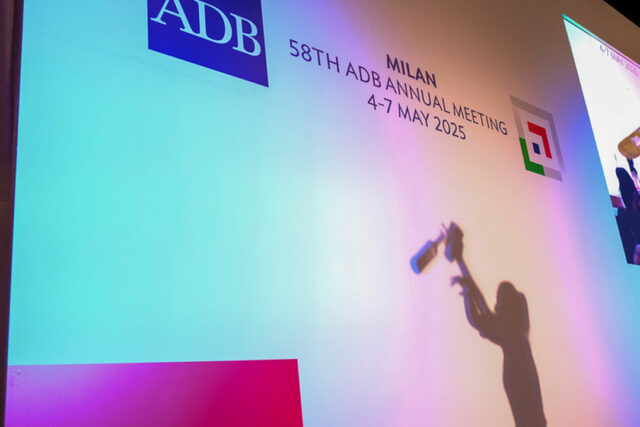By Luisa Maria Jacinta C. Jocson, Senior Reporter
INFLATION likely remained below 2% for a second straight month in April, analysts said, as the decline in key food prices such as rice kept the headline figure at bay.
A BusinessWorld poll of 14 analysts yielded a median estimate of 1.8% for the consumer price index (CPI) in April.
This is within the 1.3% to 2.1% forecast of the Bangko Sentral ng Pilipinas (BSP) for the month.

If realized, April inflation would be the same as March but would slow from the 3.8% clip logged in the same month in 2024.
This would also mark the ninth straight month that inflation settled within the BSP’s 2-4% target range.
The Philippine Statistics Authority (PSA) is scheduled to release April inflation data on Tuesday (May 6).
“Inflation likely remained benign during the month and will likely continue to do so in the next few months,” HSBC economist for ASEAN Aris D. Dacanay said.
The slowdown in food prices remains the largest driver for low inflation in April, Patrick M. Ella, an economist at Sun Life Investment Management and Trust Corp., said.
Security Bank Corp. Vice-President and Research Division Head Angelo B. Taningco cited “declining prices of rice, fish and meat amid monthly price upticks in fruits and vegetables” as factors in keeping inflation within the target range.
“Retail rice prices in the capital continued to moderate as global rice prices eased. And with global rice prices falling faster than retail prices, there is still room for local rice prices to ease even further,” Mr. Dacanay said.
For the past few months, rice inflation has been on a downtrend after the government implemented several measures to tame retail prices of the staple grain. These include the lower tariffs on rice imports in July last year and the food security emergency declared in February.
“This further disinflation comes largely from the rice CPI decline that we have noticed. Lower global oil prices may have also contributed to more easing of inflation,” Ruben Carlo O. Asuncion, chief economist at Union Bank of the Philippines, Inc., said.
Mr. Dacanay also noted the “substantial rollback” of fuel prices during the month.
“Not only did global oil prices eased, but the peso also strengthened against the US dollar, making fuel and diesel more affordable,” he added.
In April, pump price adjustments stood at a net decrease of P0.80 a liter for kerosene. It stood at a net increase of P0.40 a liter each for gasoline and diesel.
The peso closed at P55.84 per dollar on April 30, its strongest finish in more than seven months or since its P55.69 finish on Sept. 20, 2024.
“Broad-based declines in major food items — particularly rice, vegetables, and fish — along with softer oil and LPG rates continued to drive disinflation,” Bank of the Philippine Islands Lead Economist Emilio S. Neri, Jr. said.
Citi Research also flagged downside risks to the inflation outlook such as the expected impact of weaker global demand.
However, analysts said higher electricity rates and a hike in Light Rail Transit (LRT) Line 1 fares could have also stoked inflation in April.
“The upside, however, may come from higher demand for electricity that may partly offset the April headline CPI uptick,” Mr. Asuncion said.
Manila Electric Co. (Meralco) raised the overall rate by P0.7226 per kilowatt-hour (kWh) to P13.0127 per kWh in April from P12.2901 per kWh in March.
“This, combined with the sharp rise in electricity charges and the P5-P10 LRT fare hike, which affects around half-a-million daily commuters in the National Capital Region, partially offset the downward pressure on prices,” Mr. Neri said.
Starting April 2, the boarding fare at LRT-1 was increased to P16.25 from P13.29, while the distance per kilometer fare was hiked to P1.47 from P1.21.
“Although electricity prices may have increased from March, we don’t think the increase was substantial enough to offset the downside price pressures from transport and food costs,” Mr. Dacanay added.
ROOM FOR EASING
For the year, Mr. Asuncion said they expect inflation to average 2.2%.
“Our estimated inflation trajectories in 2025-2026 are well within the BSP’s inflation target range of 2-4%. Peak forecast inflation is at 2.9% at yearend,” he said.
With inflation expected to be well within the target band, the BSP will be able to continue its rate-cutting cycle.
“Considering the current inflation outlook, the possibility of another rate cut by the BSP at their June policy meeting seems plausible,” Mr. Neri said.
Oikonomia Advisory & Research, Inc. economist Reinielle Matt Erece said if inflation continues to be subdued and a drag on demand, this could prompt the need for monetary easing to boost economic activity.
“As long as inflation remains this muted, then we think the Board will continue to be more open to additional rate cuts,” Pantheon Macroeconomics Chief Emerging Asia Economist Miguel Chanco said.
The BSP’s risk-adjusted inflation forecasts are at 2.3% in 2025, 3.3% in 2026, and 3.2% in 2027.
“If inflation continues to run below or around the lower end of the BSP’s target, we think this could give room for another policy rate cut from the BSP at its next meeting in June,” Chinabank Research said.
Mr. Neri also noted that stable oil prices and the peso holding at the P56-per-dollar level will also help make the case for another rate cut.
The Monetary Board last month delivered a 25-basis-point (bp) rate cut, which put it back to an easing cycle after pausing rates in February.
Meanwhile, analysts said the central bank at its next policy meeting will be able to take into account the first-quarter gross domestic product (GDP) data in their decision.
Weaker-than-anticipated first-quarter growth would “almost guarantee further easing in June,” Mr. Chanco said.
“I expect the BSP to pay attention to inflation and the first-quarter GDP print for the June meeting. If first-quarter growth remains weak, then they will surely cut,” Mr. Ella said.
The PSA will release first-quarter GDP data on May 8.
“Furthermore, if the GDP growth figures due later this month reveal a disappointing performance, the argument for a June rate cut would be even more compelling,” Mr. Neri added.
Citi Research expects the Monetary Board to deliver a 25-bp cut at each of its meetings in August and December.
It said it also sees “risks of the latter two cuts being brought forward to June and October, respectively, given external headwinds.”
“However, we see some risk that our expected cumulative 50-bp cuts in 2026 may not materialize should growth prove more resilient to headwinds than expected,” it added.













